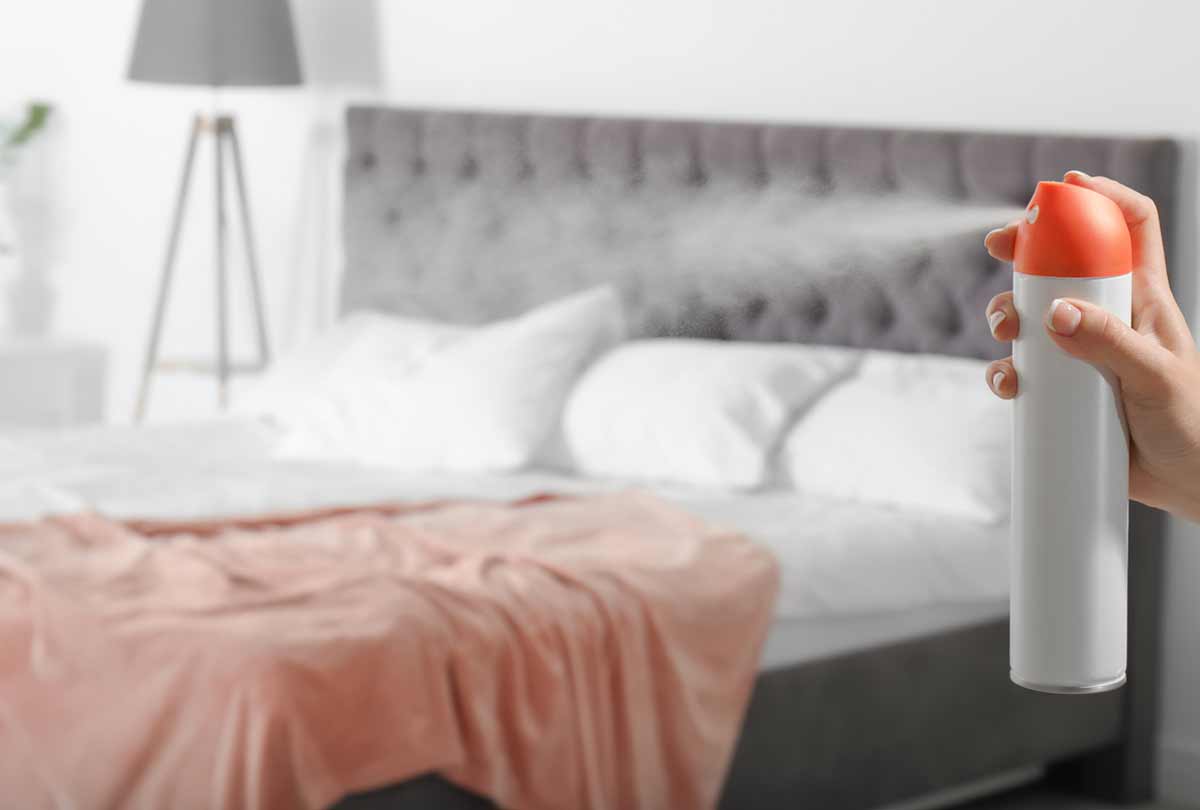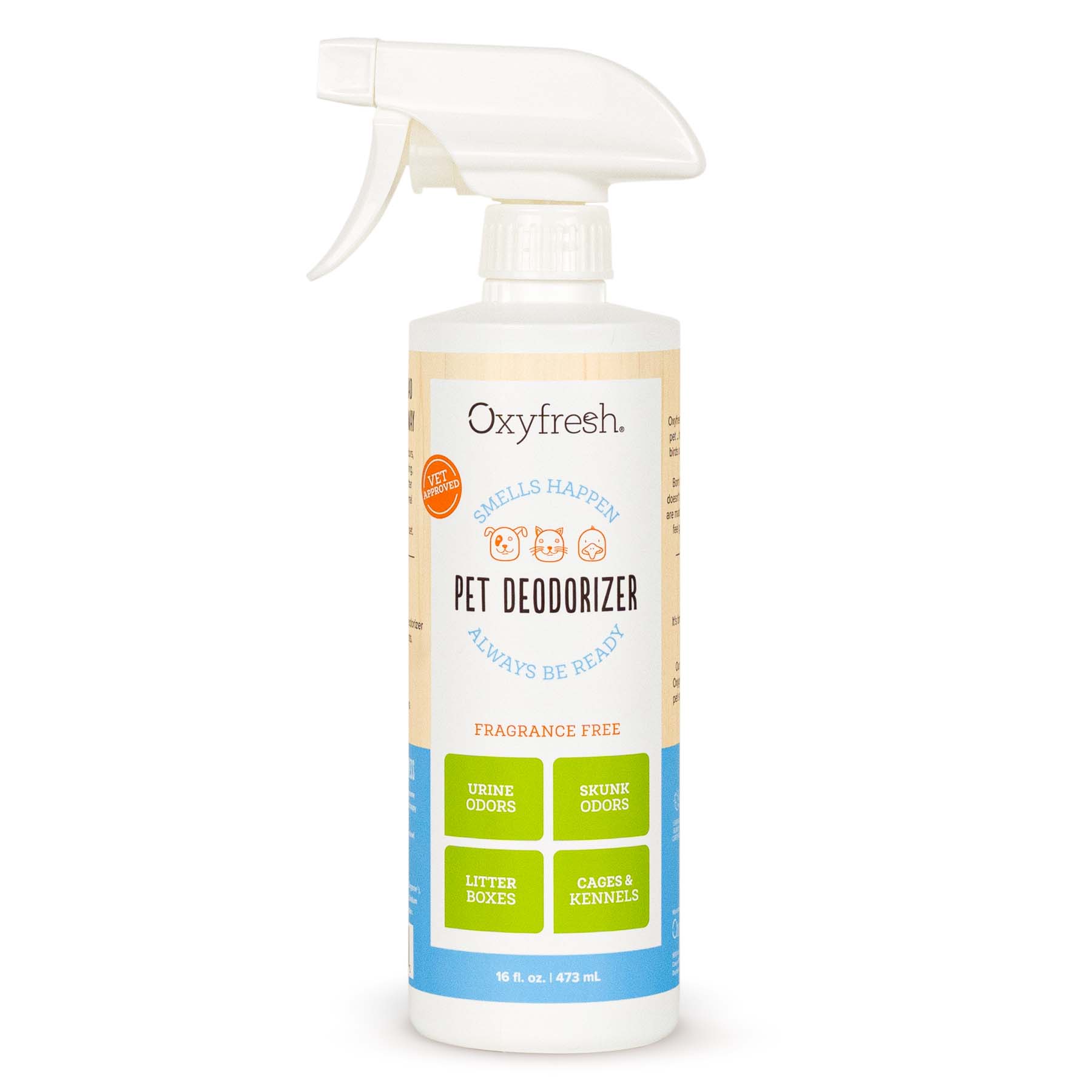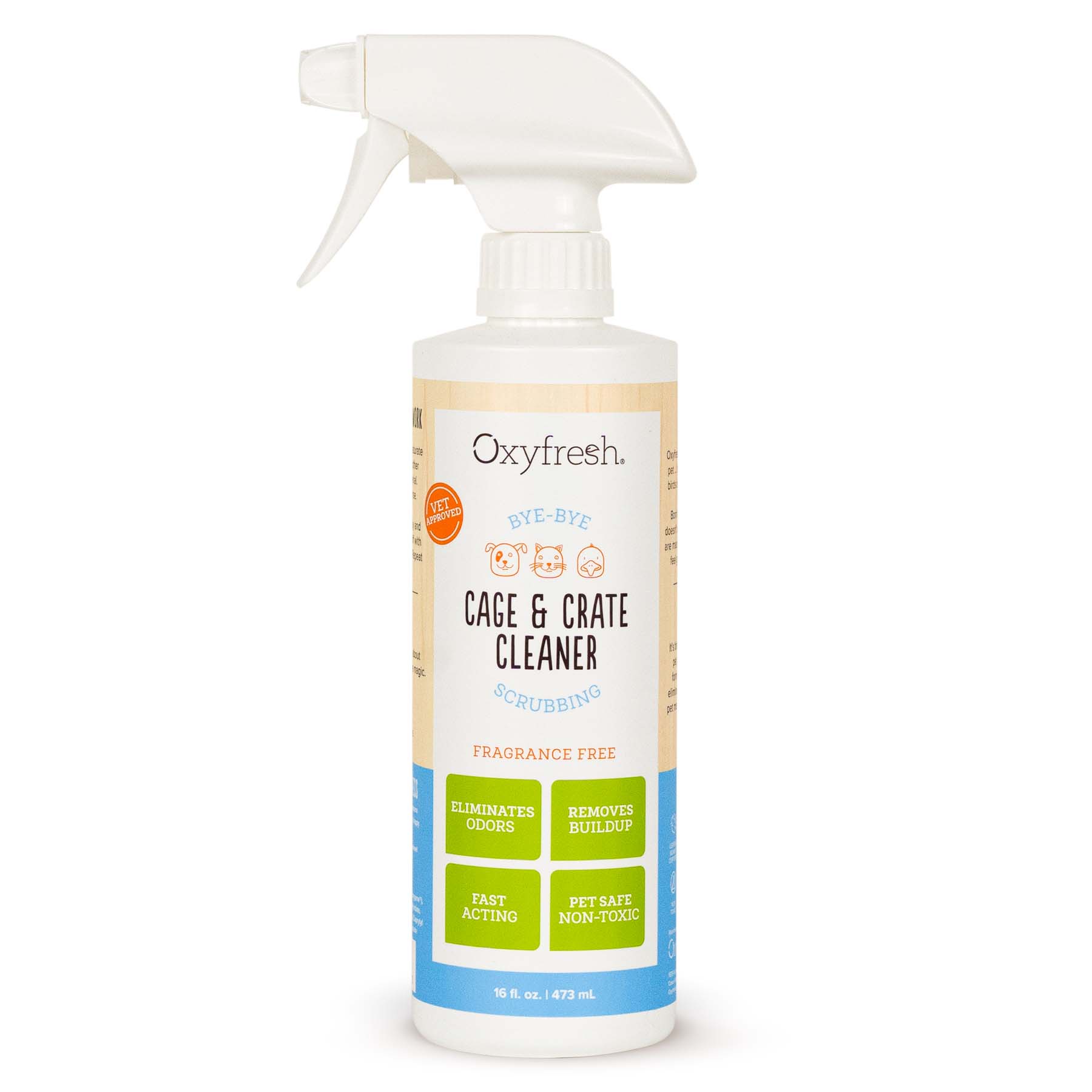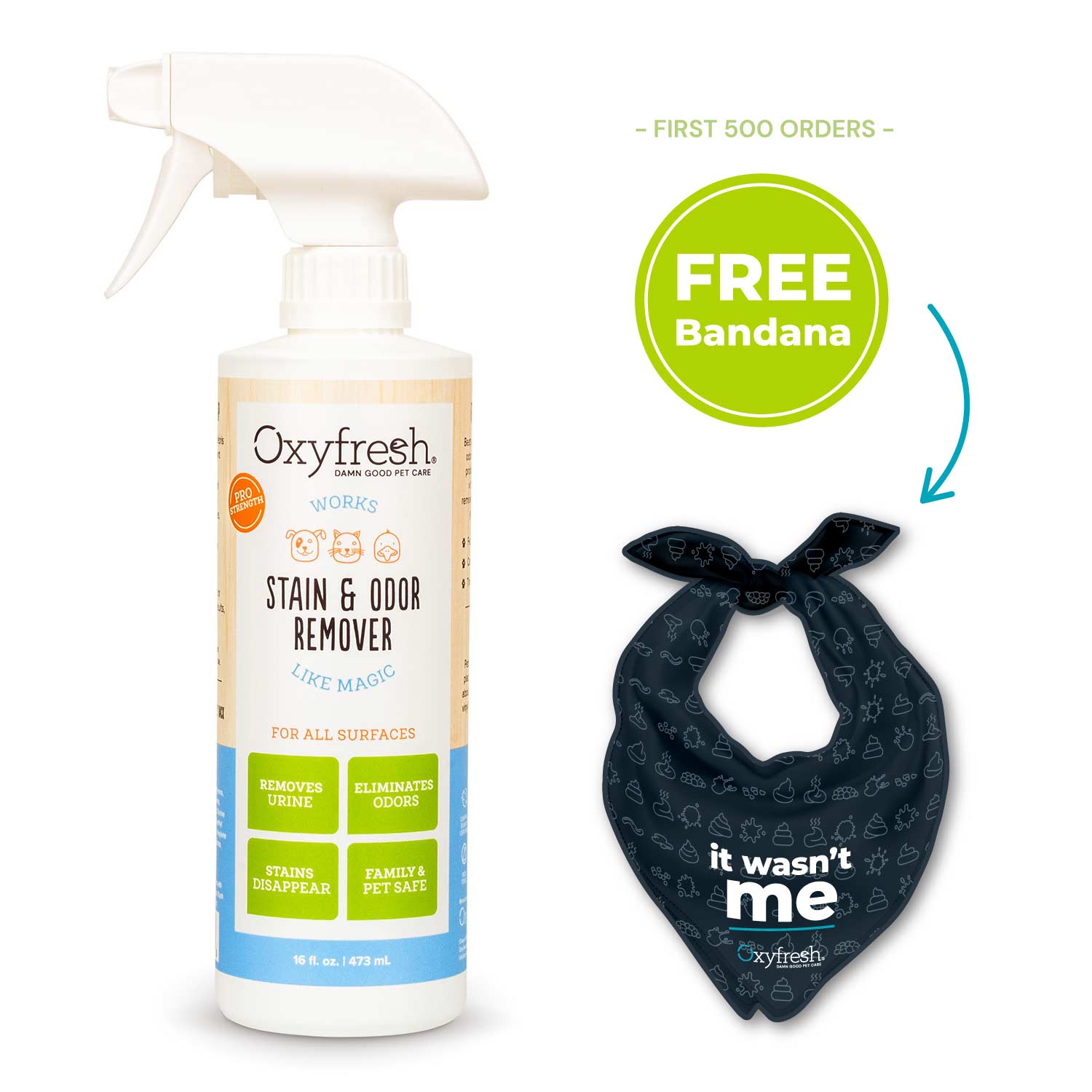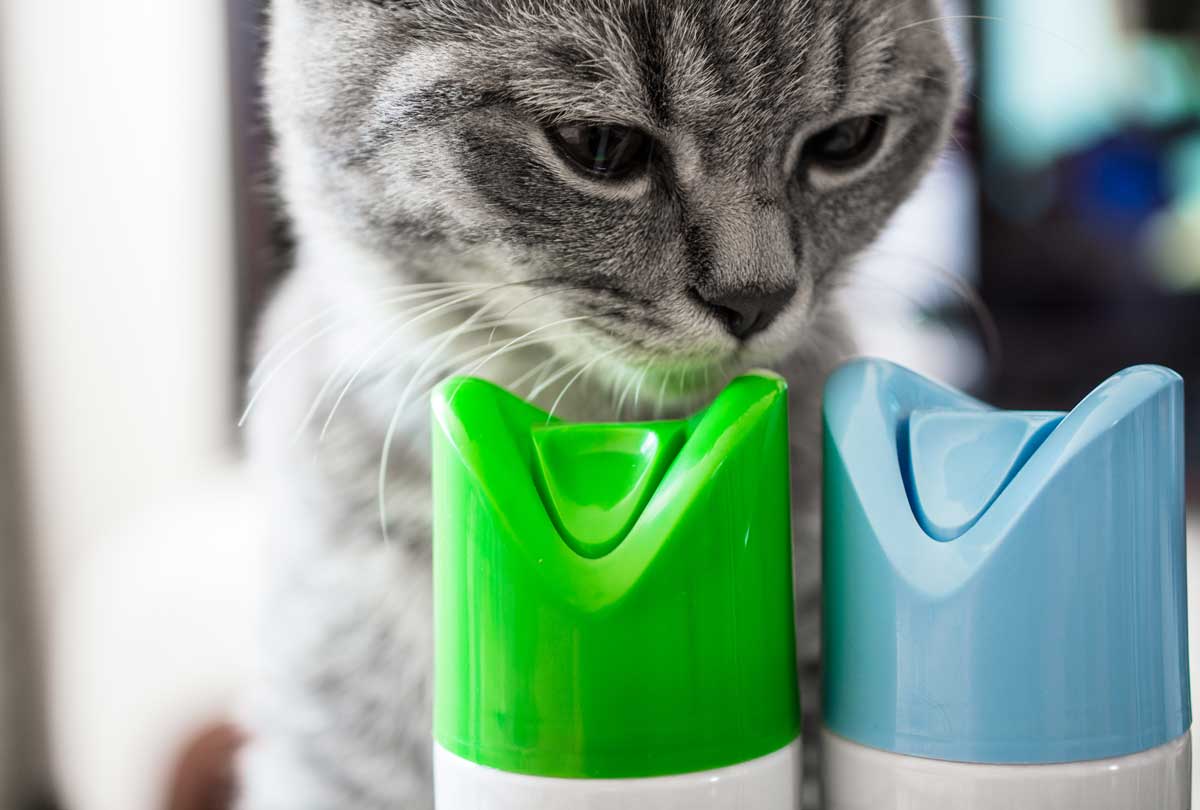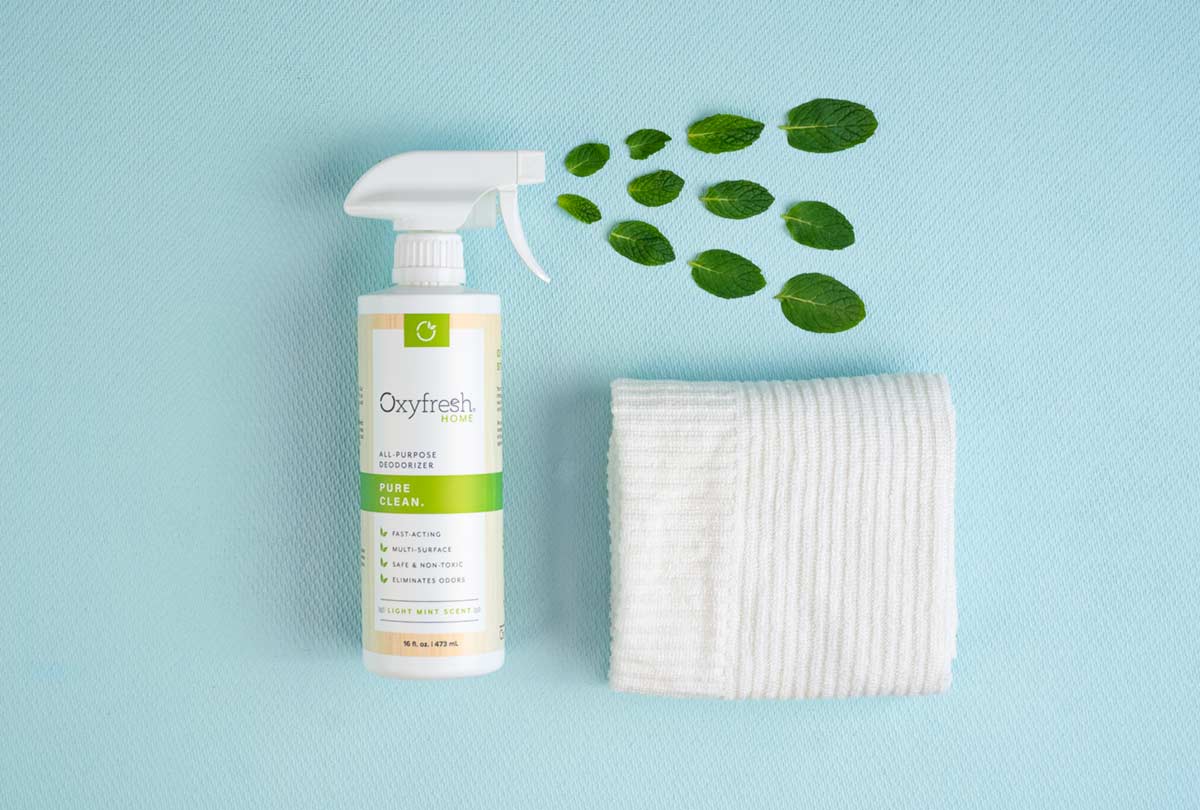It’s nearly impossible to escape the stink of air freshener spray these days. They’re everywhere! In homes, hotel rooms, businesses, and sitting atop the toilets in almost every public restroom.
Are these fragrance-heavy room fresheners harmless? Or are we secretly sabotaging our health when we’re around them? Keep reading to discover 5 reasons spray air fresheners are bad for you, plus get some safe (and super easy!) alternatives to add TRUE clean to your scene.
Is There No Stopping Our Love Affair with Air Fresheners?
Back in the day (you know, when our grandparents walked 10 miles to school and back – barefoot), simply opening up a window was how they got rid of odors.
But when the 80s hit, we didn’t just become obsessed with big bangs, banana clips and all things fluorescent … we fell hard for air fresheners too. That’s because we’ve been conditioned to associate smells with clean.
And it’s a trend that just keeps growing! According to a report by Allied Market Research, the air freshener market is projected to reach $12 billion by 2023. That’s A LOT of room freshener getting sprayed in our homes and indoor environments.
Unfortunately, we’re paying the price for it. An indoor air quality report from the Environmental Protection Agency revealed that Americans spend 90% of their time indoors, where certain pollutants are up to 5 times higher than outdoor concentrations. This begs the question: “What’s even in those things?”
Sniffing Out the Truth About Fragrance in Air Freshener Spray
Ever notice how in commercials for air fresheners, a happy family is always bounding around carefree throughout their clutter-free home, spray, spray, spraying air freshener to their hearts’ content? Everything from stinky sneakers to couch pillows and even the poor dog!
And, of course, no commercial is complete without graphics for all those flowers, fresh fruits, and treasures found in the woods and sea that make up their fragrance formulas. Eek – marketing hype at its best!
The reality is, the scent created by most air fresheners likely has ZERO of what they’re showing you in ads. Consider this: a single manufactured “fragrance” can contain hundreds of chemicals. You read that right – HUNDREDS OF CHEMICALS!
And because we’re using these sprays as a kitchen, bathroom and bedroom air freshener, the fragrance (and their chemicals) can literally be everywhere in our homes. In truth, these smells are only covering up odors rather than actually getting rid of them. It’s just fighting one scent with another, often creating a most unpleasant combination. (Who likes the smell of rotten garbage mixed with “pine forest” anyway?)
According to Women’s Voices for the Earth, there are over 3,000 fragrance ingredients declared by the International Fragrance Association (IFRA) to be currently in use in fragrance. Here are a few of them:
- Carcinogens such as styrene, methyl eugenol, pyridine and BHA
- Reproductive toxins like phthalates, lilial (butylphenyl methylpropanal) and nonylphenol
- Neurotoxicants such as xylenes and phenol
- Skin allergens such as linalool, hexyl cinnamal, geraniol, and HICC
Keep in mind, less than 10% of air freshener ingredients are usually disclosed. That’s why if you look closely at products, you’ll often see the word “other” on the label with a high percentage next to it. Savvy consumers want to know what the “other” is, but sadly, we’re likely to be holding our breaths waiting for that to happen.
Phthalates in Air Fresheners Are of Particular Concern
Phthalates (pronounced THAL-ates) are a controversial family of colorless, odorless chemical compounds, widely used in the manufacturing of plastics, personal care products, and, you guessed it, air fresheners. Why? Because of their ability to make scents last longer. (“Fresh air for hours and all day!”– more marketing hype that’s shoved down our throats!)
Phthalate exposure is linked to:
- Hormonal abnormalities
- Lower IQ and ADHD in children
- Birth defects of the reproductive organs
- Fertility problems including miscarriage and low sperm count
Buyer beware: the FDA has no regulations on the use of phthalates and does not require companies to list them on product labels. Instead these chemicals hide under the word “fragrance.”
Companies can get away with this because fragrance formulas are protected under trade secret law, which means companies don’t have to disclose the chemicals that make up that fragrance, and they definitely don’t have to list them out on the product label!
How prevalent is our phthalate problem?
When the CDC tested 289 people, they found high levels of phthalates in all of the subjects’ blood samples. And when the Natural Resources Defense Council (NRDC) evaluated 14 popular air fresheners, 12 of them were found to contain phthalates, even ones that claimed to be “green” or a “natural home deodorizer.”
So unless you see “phthalate free” on the label, or you see fragrance completely omitted from the list of ingredients, there’s a good chance your air freshener contains phthalates.
Who knew that one little innocent word “fragrance” could be doing such a tremendous disservice to our health. But that’s exactly what’s happening.
5 (More) Reasons Air Fresheners Are Bad for You
In addition to all the negative health risks associated with phthalates, here are 5 more health reasons we should proceed with caution when using spray air fresheners, plug-ins, incense, candles and other scented freshening products.
#1. They increase the risk of asthma & respiratory problems
Room freshener sprays contain volatile organic compounds (VOCs), compounds with a low boiling point that form a gas or vapor at room temperature. These include formaldehyde, petroleum distillates, limonene, esters, acetone, acetaldehyde, chloromethane, and 1,4 dioxane. Yikes.
These ingredients are shown to increase the risk of asthma in children, and make existing allergies and asthma even worse. For those who are regularly exposed to air freshener spray, their risk of asthma is 50% greater than air freshener abstainers.
Did you know? In a study of fragrance products, including air freshener spray and plug-ins, researchers identified 20 different VOCs just in the plug-in freshener, including seven regulated as toxic or hazardous under U.S. federal laws.
Unfortunately, a simple “do not inhale” warning is all it takes from the brand, rather than a list of what these compounds in the product are. (Are you starting to see a pattern here? Consumers are really being left in the dark as to what we’re breathing in.) No surprise then that respiratory problems top the list of complaints related to air freshener spray.
Things that make you go hmm: None of us would bust open a can of paint to use as a room freshener, but with similar VOCs, it’s the equivalent of what happens when we spray toxic air fresheners in our homes.
#2. They cause migraines
Ever notice that you start to get a pounding in your head when you walk down the grocery store aisle that houses all the plug-ins and odor neutralizer spray? Or maybe you experience it when you’re riding in a car that has a freshly opened air freshener permeating throughout. It’s no coincidence. Technically called osmophobia, this heightened aversion to smells can cause our blood vessels to swell and dilate, which wakes up the nerve system in our brains that trigger head pain.
#3. Watch out for skin irritation
As noted by the American Academy of Dermatology (AAD), an estimated 2.5 million Americans suffer from fragrance allergies. Fragrances can cause allergic-type skin irritation, ranging from itching and redness to rashes.
#4. Increase in mucosal symptoms
When participants of a Danish population-based study of allergic diseases were given a questionnaire about symptoms they experienced when they were exposed to fragrance products, 42% reported mucosal symptoms from the eyes and airways.
#5. Cancer concerns
While more research needs to be done, especially around the long-term effects of air fresheners, there’s no debate around the toxicity of many ingredients in air fresheners. Most fragrance chemicals contain terpenes. When they react with ozone in the air, they produce a host of secondary pollutants, including formaldehyde. Formaldehyde is a known carcinogen that’s been linked to cancers of the nose and throat. Most air fresheners already contain formaldehyde and then even more is produced by reacting with ozone in the air – a double whammy.
Psst … It’s Likely Others Don’t Appreciate Our “Fresh Smell”
We’ve been so ingrained to fear smelling bad – no one want to be known around the water cooler as the one with the bad BO, after all – this fear has extended into our homes and businesses. But in our quest to have our surroundings smell like a “Caribbean breeze” or other such enticing smell, it’s likely we’re offending others.
Scents that are tolerable to some may be completely intolerable to others. If you’ve ever stood next to someone who has way overdone it on the cologne, you know what we’re talking about!
According to a Preventive Medicine Report on fragranced consumer products, an Australian study revealed the following:
- 1/3 of the population reported negative health effects from fragranced products, including respiratory problems, migraines and asthma attacks.
- 73% of survey respondents were unaware that scented products emit hazardous air pollutants – 56% said they would stop using them if they did.
- Twice as many people would prefer fragrance-free indoor air environments vs. scented ones.
- 7.7% of people have lost workdays or even their jobs because of an intolerance to fragrances.
These same findings appear to be widespread. A fragrance sensitivity study in America revealed that 30.5% of the general population find it irritating when they can smell scented products on others. Additionally, 19% of people reported adverse health effects from air fresheners.
And it’s not just the humans who can suffer from exposure to fragrances!
Dogs have up to 300 million olfactory receptors in their noses, compared to us humans with a paltry six million. This means their smelling power surpasses ours by leaps and bounds. Even a cat’s sense of smell is 14 times greater than ours. It also means they’re much more sensitive to fragrance smells and volatile organic compounds.
Signs that your pet is sensitive to air fresheners:
- Sneezing
- Coughing
- Discharge from the eyes/nose
- Vomiting
- Diarrhea
- Lethargy
- Poor appetite
Long-term effects are even more concerning. It’s shown that cats have an increase in feline asthma in homes where there are air fresheners, incense or cigarette smoke.
Of course, our pets can’t tell us when they’re irritated or uncomfortable – unless they know the trick of lifting their paw and batting the air freshener spray out of our hands.
Pawsitive thought: If you’re interested in becoming a greener pet parent, check out our list of the 5 best eco-friendly pet products.
 Go, go green thumb! Yes, plants really can purify the air! They can get rid of toxins like formaldehyde, benzene and xylene. Here are some plants that are amazing at purifying the air, and don’t worry – everything on the list is pet-friendly too!
Go, go green thumb! Yes, plants really can purify the air! They can get rid of toxins like formaldehyde, benzene and xylene. Here are some plants that are amazing at purifying the air, and don’t worry – everything on the list is pet-friendly too!
- Money Tree Plant (who knows, it may bring you some good fortune!)
- Spider Plant
- Boston Fern
- Moth Orchids
- Bamboo Palm
Hint: you can also use your “phone a friend” lifeline. Sometimes we get so used to our own smells, we become immune to them. We can also be ultra-worried about having odors in the home, especially if we have pets … or teenagers. Ask a friend for their honest opinion on whether or not your home actually smells bad.
The bottom line on odors and air fresheners:
Proceed with caution if you decide to keep using artificial fragrance air fresheners and plug-ins in your home. Even if you don’t feel the effects, such as watery eyes or headaches, this doesn't mean they aren’t doing harm to your body.
The good news is, it’s never too late to adopt a healthier lifestyle and change our habits. And, that’s news everyone wants to hear! So if you have a spray and plug-in loving friend, or you work at a place where air freshener is a part of daily life, be sure to share this post with them.

